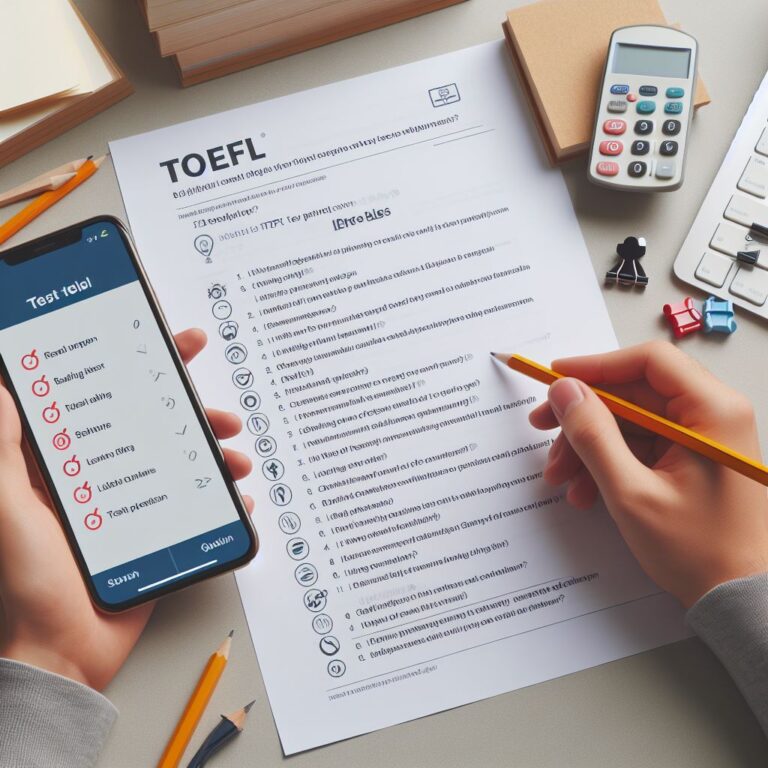Taking Notes
What you will find in this guide:
How to take effective notes for TOEFL listening
The TOEFL listening section is one of the most challenging parts of the test for many students. It requires you to listen to lectures and conversations on various academic topics and answer questions based on what you heard. To do well on this section, you need to take effective notes that will help you recall the main ideas and details of the audio clips.
In this guide, I will share some tips and strategies on how to take effective notes for TOEFL listening. These tips will help you improve your listening comprehension, memory, and accuracy.
Tip 1: Use symbols and abbreviations
One of the most important skills for taking notes is to use symbols and abbreviations that will save you time and space. For example, you can use arrows, circles, squares, stars, and other shapes to indicate relationships, categories, examples, and important points. You can also use abbreviations for common words or phrases, such as b/c (because), ex (example), def (definition), etc. However, make sure that you are consistent and clear with your symbols and abbreviations, and that you can understand them later.
Tip 2: Organize your notes by structure
Another important skill for taking notes is to organize your notes by the structure of the audio clip. For example, if you are listening to a lecture, you can use headings and subheadings to indicate the main topic and subtopics of the lecture. You can also use bullet points or numbers to list the main points and supporting details of each subtopic. If you are listening to a conversation, you can use columns or boxes to separate the speakers and their opinions or arguments. You can also use keywords or phrases to summarize the main idea or purpose of the conversation.
Tip 3: Focus on key information
A common mistake that many students make when taking notes is to try to write down everything they hear. This is not only impossible, but also counterproductive, as it will distract you from listening and understanding the audio clip. Instead, you should focus on key information that will help you answer the questions later. For example, you should pay attention to names, dates, numbers, facts, examples, opinions, reasons, comparisons, contrasts, and transitions. You should also note down any words or phrases that are repeated or emphasized by the speaker.
Tip 4: Review your notes after listening
The final tip for taking effective notes is to review your notes after listening to the audio clip. This will help you consolidate your memory and check your understanding of what you heard. You can review your notes by reading them aloud, paraphrasing them in your own words, or explaining them to a friend or a study partner. You can also compare your notes with other sources of information, such as textbooks or online articles, to verify their accuracy and completeness.
What to look for while taking notes
Unlike other listening tests, the TOEFL does not show you the questions before you listen to the audio. This means that you have to listen carefully and try to catch the important information without knowing what you will be asked later. This can be challenging, but there are some strategies that can help you improve your note-taking skills and your listening score.
Tip 1: Look for the gist
One of the most important things to look for while taking notes in TOEFL listening is the main idea of the audio. The main idea is the overall purpose and topic of the audio. For example, if you are listening to a conversation between two students, you should try to figure out why they are talking and what they are talking about. If you are listening to a lecture, you should try to identify what the professor is teaching and what the main points are. The main idea will help you answer the first question in every listening task, which is usually a gist question that asks you to summarize what the audio was about.
Tip 2: Look for What, Why, and How
Another thing to look for while taking notes in TOEFL listening is the important details in the audio. These details can be facts, examples, explanations, opinions, or arguments that the speakers use to convey their message. For example if you are listening to a lecture and in that lecture, the professor says: there are two reasons why dinosaurs went extinct, you should note down the reasons because they are important information. Then you should focus on how they went extinct and possibly why.
Generally speaking, you should pay attention to what they say, how they say it, and why they say it. For example, if you hear a word like “because”, “however”, or “therefore”, you should note down the cause-and-effect relationship that follows. If you hear a word like “for example”, “such as”, or “like”, you should note down the example that illustrates the point. If you hear a word like “agree”, “disagree”, or “suggest”, you should note down the opinion or recommendation that is expressed. These details will help you answer most of the questions in the listening task, which can ask you about specific information, inference, attitude, function, or organization.!
Tip 3: Know the question types
A final thing to look for while taking notes in TOEFL listening is the question types that are commonly used in the test. By knowing the question types, you can anticipate what kind of questions you will get and focus on the relevant information in the audio. There are six main question types in TOEFL listening: gist-content, gist-purpose, detail, function, attitude, and organization. Each question type has its own characteristics and keywords that can help you identify it. For example, a gist-content question will ask you about the main topic or idea of the audio, using words like “mainly”, “primarily”, or “mostly”. A gist-purpose question will ask you about the reason why the speakers talk or why the audio is recorded, using words like “why”, “purpose”, or “goal”. A detail question will ask you about a specific fact or example that was mentioned in the audio, using words like “according to”, “what”, or “how”. A function question will ask you about the role or meaning of a word or phrase that was used in the audio, using words like “what does … mean”, “why does … say”, or “how does … help”. An attitude question will ask you about the feelings or opinions of the speakers, using words like “feel”, “think”, or “believe”. An organization question will ask you about how the audio is structured or arranged, using words like “first”, “next”, or “finally”. By knowing these question types and their keywords, you can take better notes and answer more accurately.
Final words
To sum up, taking notes in TOEFL listening can be difficult but not impossible. You should look for three things while taking notes: the main idea of the audio, the details that support it, and the question types that are likely to appear. By doing this, you will be able to catch more information and answer more questions correctly. Good luck with your TOEFL preparation






